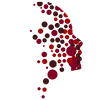Once a tracheostomy is in place, respiration is occurring (mostly) through the tracheostomy tube. Although the upper respiratory passageways are still connected to the trachea and lungs, airflow will always follow basic laws of physics, in this case: the path of least resistance.
It will always be easier for airflow to travel through the open tracheostomy tube than through the passageways of the throat, mouth and nose. For this reason, a patient with a tracheostomy is known as a “neck breather.”
This is an important distinction! Since the majority of the air you breath will pass through the neck, it also means it is not passing through the nose and mouth. There are some significant changes that occur as a result.
It will always be easier for airflow to travel through the open tracheostomy tube than through the passageways of the throat, mouth and nose. For this reason, a patient with a tracheostomy is known as a “neck breather.”
This is an important distinction! Since the majority of the air you breath will pass through the neck, it also means it is not passing through the nose and mouth. There are some significant changes that occur as a result.


